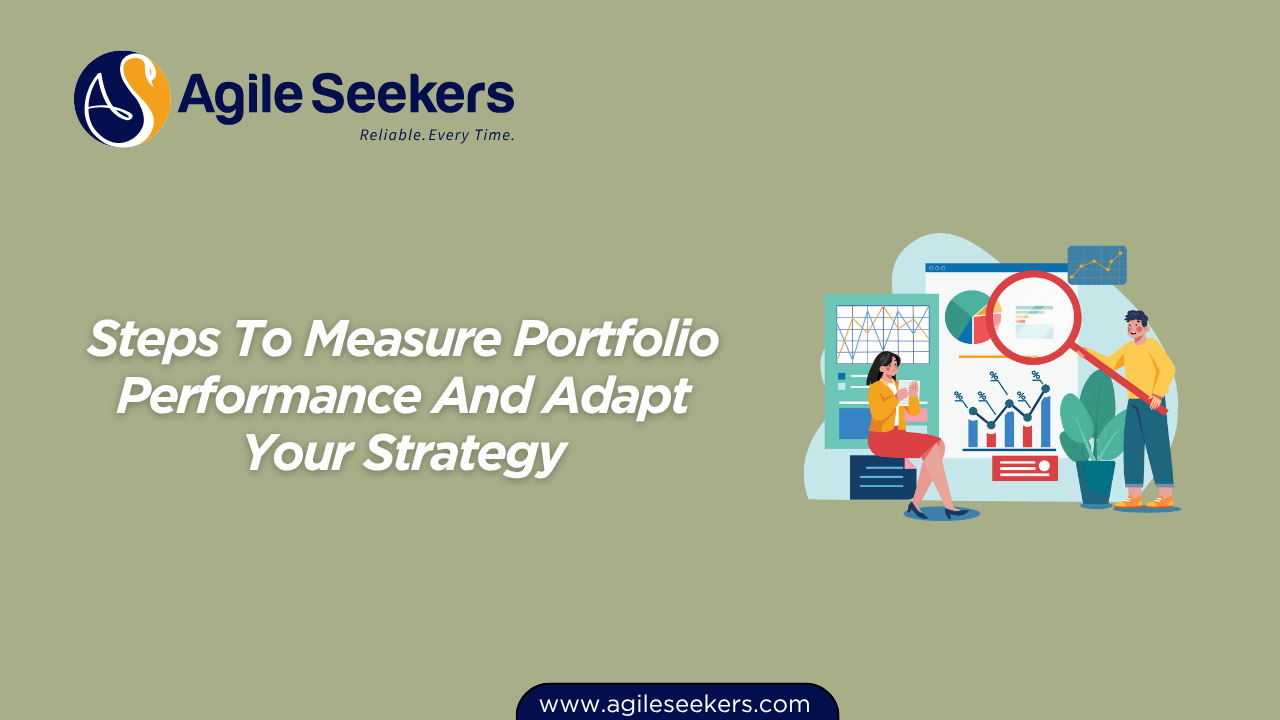Steps To Measure Portfolio Performance And Adapt Your Strategy

Let’s get real, managing a portfolio is about outcomes, not outputs. It’s about knowing whether all those agile teams, investments, and big bets are actually moving your business forward—or if you’re just staying busy. If you want to make smarter decisions, you have to track the right signals, interpret them honestly, and be ready to change course when reality tells you to.
This is what separates organizations that just talk about agility from those that live it.
1. Set Clear Objectives Aligned With Strategy
Everything starts here. If your objectives are fuzzy, your metrics will be, too. Define what “success” means at the portfolio level—think business outcomes, not just completed projects.
-
Are you trying to enter a new market?
-
Cut costs by a certain percentage?
-
Improve customer retention?
Anchor your objectives to your strategic vision. These are your north stars.
Further reading:
See how strategic themes help connect portfolio vision to execution in the SAFe framework.
2. Identify Key Performance Indicators (KPIs)
KPIs bring your objectives down to earth. You want metrics that are actionable, transparent, and forward-looking. A few high-impact examples:
-
Return on Investment (ROI): Are your investments delivering real value?
-
Time to Market: How fast are you delivering new capabilities?
-
Customer Satisfaction: What does customer feedback actually say?
-
Innovation Rate: How many new ideas make it to production?
Choose metrics that reflect business health—not vanity numbers. For more on choosing the right KPIs, check out this guide from Project Management Institute.
3. Visualize Portfolio Flow
Here’s the thing: most portfolios choke not because people aren’t working hard, but because value gets stuck. Use value stream mapping to visualize how work flows (or doesn’t) from idea to delivery.
-
Where are the bottlenecks?
-
Are high-priority items getting stuck?
-
How much WIP (work in progress) is too much?
Regularly review your portfolio Kanban or similar boards. This is where the rubber meets the road for portfolio agility.
Get certified:
Learn more about optimizing flow and managing WIP with the SAFe Product Owner/Product Manager Certification.
4. Gather Data From Multiple Sources
Don’t rely on a single dashboard or report. Pull insights from:
-
Financial systems: Budget burn, investment allocation, cost overruns
-
Agile project tools: Feature completion, velocity, defect rates
-
Customer feedback loops: NPS, user testing, support tickets
-
Market signals: Competitor moves, regulatory changes, tech trends
Make data collection routine, not an annual event. The more real-time, the better.
5. Analyze Trends And Spot Patterns
Now you need to read between the lines. Numbers are just the start; interpretation matters more.
-
Are you seeing delivery slowdowns?
-
Is customer sentiment drifting?
-
Are some investments consistently underperforming?
Look for patterns over time, not just this quarter’s numbers. Use dashboards that show trends, deltas, and outliers.
Upskill your analysis:
Deepen your understanding with the SAFe Scrum Master Certification, which covers agile metrics and team-level performance.
6. Review With The Right Stakeholders
Bring portfolio leaders, business owners, finance, and delivery teams together. The goal isn’t a status update—it’s a real conversation about what the data means and what you should do next.
-
What’s working? Celebrate it, don’t just move on.
-
What’s not? Dig into why.
-
Where’s the uncertainty? Call it out.
This is how you avoid groupthink and catch problems early.
7. Adapt Your Strategy Based On Evidence
All the measurement in the world is useless unless you’re willing to act on it. If something isn’t working, pivot early.
-
Reallocate funding from laggards to high performers.
-
Change strategic themes if markets shift.
-
Adjust WIP limits, team composition, or value stream boundaries as needed.
Being “agile” means being honest enough to change your mind when the evidence says so.
Go further:
Master adaptive strategy with Leading SAFe Agilist Certification Training, which dives deep into portfolio-level adaptation.
8. Create Feedback Loops And Inspect & Adapt
Don’t just analyze once and forget about it. Set up Inspect & Adapt workshops at the portfolio level:
-
Review KPIs and metrics with a cross-functional group.
-
Identify what you’ll stop, start, or continue.
-
Document lessons learned and feed them into the next cycle.
Pro tip: Use outcome-based retrospectives, not just activity-based ones.
9. Scale Learning Across The Organization
The point isn’t just to fix problems in one portfolio—share your wins, failures, and lessons learned.
-
Hold quarterly knowledge-sharing sessions.
-
Create communities of practice for PMOs, architects, and agile coaches.
-
Build a living library of case studies and playbooks.
This is how you move from pockets of agility to organization-wide improvement.
10. Invest In Continuous Improvement
Finally, remember: no process is ever “done.” The highest-performing portfolios are relentless about learning, upgrading their practices, and staying close to both customers and markets.
Consider advanced learning:
Explore the SAFe Advanced Scrum Master Certification Training and SAFe Release Train Engineer Certification Training for deeper expertise in scaling, facilitation, and cross-team improvement.
Final Thoughts
Measuring portfolio performance and adapting strategy isn’t about dashboards or reports—it’s about building a culture of evidence-based decision-making, honest feedback, and real adaptability. Do this consistently, and your portfolio becomes a true driver of business value, not just a reporting layer.
If you’re ready to take your portfolio management to the next level, invest in skills, certifications, and most importantly—real conversations that connect data to action.
Also read - Why Portfolio Flow Is Critical For Delivering Business Results
Also see - How To Prioritize Portfolio Backlog Items For Maximum Business Value




















